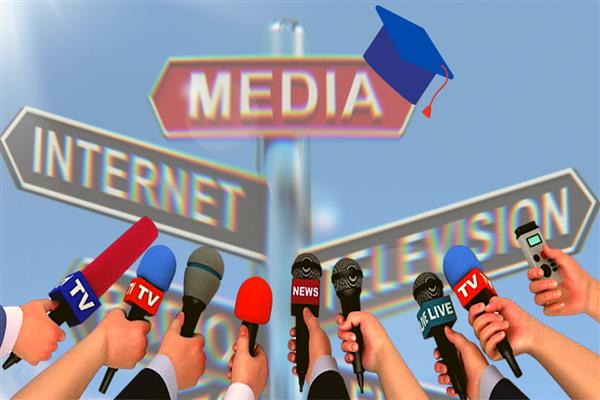Search here

16-Jun-2025 , Updated on 6/16/2025 11:54:07 PM
Who Controls the Narrative in Indian Media Today?
People often call the media the fourth pillar of democracy. It's supposed to keep the powerful in check and give a voice to regular folks. But in India, this idea is facing some serious questions. The urgent issue of Who controls the narrative in Indian media today? is complicated. The media's reach is influenced by political agendas, corporate ownership, digital platforms, and how the public sees things. Even though there’s a lot of media out there, not all of it is as free or neutral as it used to be.
The Changing Media Scene in India
In the last 20 years, the Indian media has changed a lot. What once was mostly a few
government-run outlets has turned into a huge industry with tons of TV channels, print newspapers, and a massive online presence. But this growth has come with downsides like more commercialization, fewer independent owners, and closer ties to politics. Now, what gets reported often depends more on interests than on good reporting.
Political Influence: The Main Factor
A lot of what we see in the media is influenced by political powers, especially the ruling party. Mainstream news channels often echo what those in power say, either willingly or out of fear. The government uses advertising to reward friendly media and punish those who speak up. News outlets that align with the government get more funding, while those that criticize risk facing consequences.
For instance, journalists who go against the government can find themselves dealing with tax raids or online harassment. To survive, many end up censoring themselves. This political influence even affects which news gets covered—issues like unemployment or inequality might be downplayed while national pride stories get more attention.
Corporate Ownership and Money
Big business owners have greatly impacted how news is told. Many channels and newspapers belong to corporations with interests in areas like telecom and real estate. These corporate owners often have close ties with political parties, confusing the boundary between news and business.
Decisions about content are often more about making money and keeping advertisers happy rather than serving the public. Investigative stories that expose big corporations are getting rarer, and light entertainment or gossip fills the air. In this world, ratings often mean more than the truth.
Social Media: New Narrative Controllers
With the rise of platforms like Twitter and Instagram, social media now plays a big role in shaping how people think. Still, these platforms can be manipulated too. There's a lot of misinformation out there through paid promotions and algorithms that create bubbles of false information.
Political groups are now running organized efforts online to push their views, drown out opposition, and rally support. While social media can let other viewpoints shine, it can also let the loudest voices drown out everyone else.
The Role of TRP and Sensationalism
On TV, especially with Hindi and regional channels, the competition for ratings drives content. This chase for ratings has led to more sensational stories and dramatic debates rather than real discussions on important issues. It’s more about getting attention than thoughtful reporting.
With an emphasis on emotional stories about religion, nationalism, and crime, deeper issues tend to be ignored. This red-hot urgency often helps those in power by distracting everyone from real problems.
Independent Media: Holding the Line
Despite the tough environment, there are still independent outlets like The Wire, Scroll.in, and Alt News that focus on real reporting and fact-checking. They usually run on donations and subscriptions, which helps them stay independent. But they struggle to reach as many people as mainstream media.
These independent platforms often face legal threats and smear campaigns, showing how much power they have in challenging the status quo.
Conclusion
So, who really controls the narrative in Indian media today. It involves a mix of political power, corporate control, manipulation on digital platforms, and commercial interests. While there’s still some independent media, the main stories often come from those who already hold power—be it political, financial, or through algorithms.
In a healthy democracy, media should hold the powerful accountable and provide diverse viewpoints. In India right now, though, too many narratives are shaped by a small number of people, stifling dissent and discussion. It’s up to journalists as well as citizens to push for and support independent journalism—before the truth is lost in the mix.

Individual / Self Employee
I’m Lakshya, a passionate content writer skilled in crafting engaging, SEO-friendly articles, blogs, and web content. I focus on clarity, creativity, and delivering value across diverse topics and industries.
Join Our Newsletter
Subscribe to our newsletter to receive emails about new views posts, releases and updates.
Copyright 2010 - 2025 MindStick Software Pvt. Ltd. All Rights Reserved Privacy Policy | Terms & Conditions | Cookie Policy